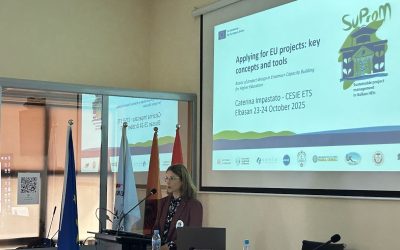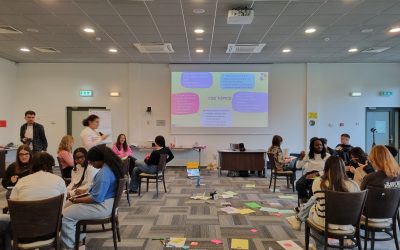Traditional formal educational models often pose significant barriers to students facing economic hardships, geographical constraints, and/or disabilities. Higher Education Institutions should be aware that due to the changing diversity of the student body, their engagement and teaching strategies need to consider the needs of different student groups.
The challenges students face for living expenses or distance to universities pose additional challenges that can have a detrimental effect on a student’s educational outcomes: many students living in remote areas or far from university campuses financially struggle for accommodation and living expenses or for frequently travelling long distances to reach their faculties, making it difficult for them to attend regularly.
Also, Higher Education is not always set up in a way that makes it easily accessible to students with disabilities: apart from issues with both accommodation and learning spaces, adjustments to teaching methods to meet specific needs are rarely planned ahead by faculties, or adjustments tend to be generic blanket provisions, and not always inherently geared toward the individual. So, students with disabilities keep to face limitations in accessing activities, which constrains their curriculum choices.
These barriers can weigh heavily on students’ minds, which inevitably impacts upon their student experience and their ability to thrive academically.
The SMARTEL project shows how universities can harness ICT to enhance accessibility and inclusivity in Higher Education. Recognizing these economic, geographical and disability challenges in their student population, Higher Education Institutions from Kosovo, Montenegro, and Bosnia and Herzegovina – supported by European institutions from Slovenia, Malta and Italy – embraced digital learning solutions to bridge these gaps and ensure equitable access to education for all.
Through the SMARTEL project, Higher Education Institutions have equipped classrooms with multimedia technology, creating hybrid learning environments that facilitate remote participation. By leveraging platforms like Moodle and BigBlueButton, institutions can deliver interactive lectures and practical sessions to remote students in real-time, and students can access lectures and course materials from anywhere with an internet connection. As for disabilities, SMARTEL approached visual impairments, in particular, which present significant challenges in accessing traditional learning materials. Through the project, universities have implemented innovative solutions such as audio descriptions, screen readers, and tactile graphics to accommodate students. As course content is accessible in multiple formats, institutions empowered students with disabilities to fully participate in academic activities and achieve their educational goals more efficiently.
Trained staff from Higher Education Institutions included: administrators, to maintain the distance learning platforms and smart labs; developers, to build interfaces between different components of distance learning platforms and smart labs and how to enhance built-in functionalities of the components; and also teachers and staff, to prepare and adjust teaching content for lecturing and to perform examination of students using the platform. In this respect, it was crucial to develop new pedagogical
approaches and learning methodologies to be implemented in teaching to adapt to the online environment effectively. This included strategies for fostering student engagement and interaction, designing multimedia content for enhanced learning experiences, and incorporating assessment methods suitable for remote learning. Additionally, further internal training and support were provided to ensure that teachers and staff were proficient in utilizing the available technology and resources to facilitate a seamless transition to distance education.
The success of the SMARTEL project is the results of a truly collaborative efforts of European partners and Partner Countries institutions. By sharing expertise and resources, universities have been able to implement comprehensive digital learning solutions tailored to their specific needs and challenges and enhancing the quality of their educational offer. This project is an example of how Erasmus+ Capacity Building projects in Higher Education may serve as catalysts for societal development, economic growth, and the advancement of higher education.
For further information, please contact Alessia Valenti: alessia.valenti@cesie.org
About the project
SMARTEL – Improving the process of education through the development of e-learning multimedia platform and smart classrooms is cofinanced by Erasmus+ programme, DG EAC: Directorate General for Education and Culture.
Partners
- UNIVERSITY OF MITROVICA (Kosovo)
- INTERNATIONAL BUSINESS COLLEGE MITROVICA (Kosovo)
- JAVNA USTANOVA UNIVERZITET CRNE GORE PODGORICA (Montenegro)
- UNIVERZITET ADRIATIK BAR (Montenegro)
- UNIVERZITET U ISTOCNOM SARAJEVU (Bosnia and Herzegovina)
- University of Mostar (Bosnia and Herzegovina)
- UNIVERSIDAD POLITECNICA DE MADRID (Spain)
- UNIVERSITA TA MALTA (Malta)
- UNIVERZA V LJUBLJANI (Slovenia)
- CESIE (Italy)
For further information
Read more about SMARTEL and visit the website https://smartel.pr.ac.rs/.
Contact Alessia Valenti: alessia.valenti@cesie.org.









